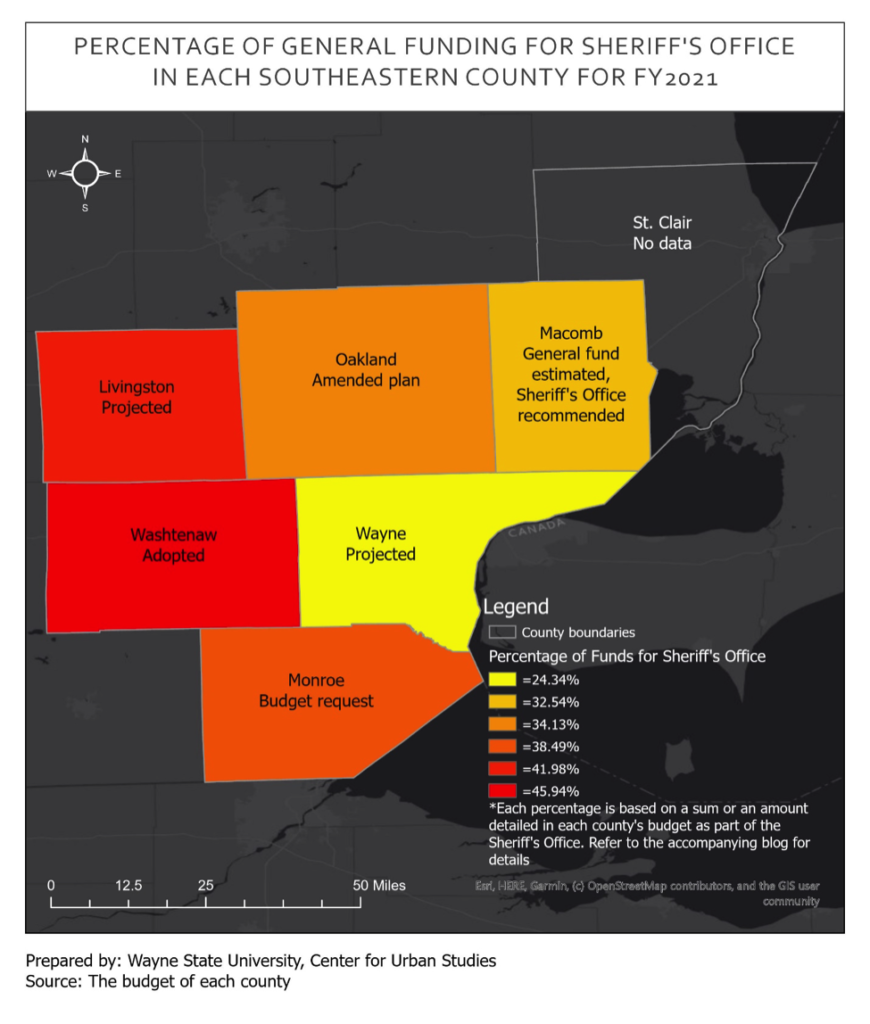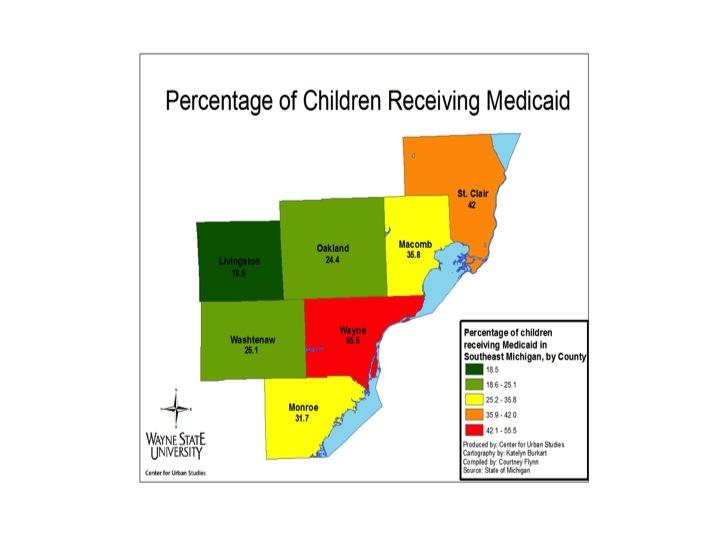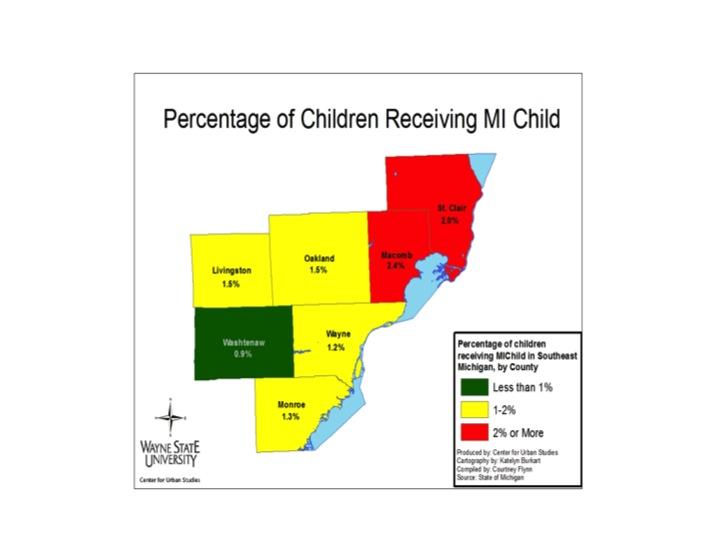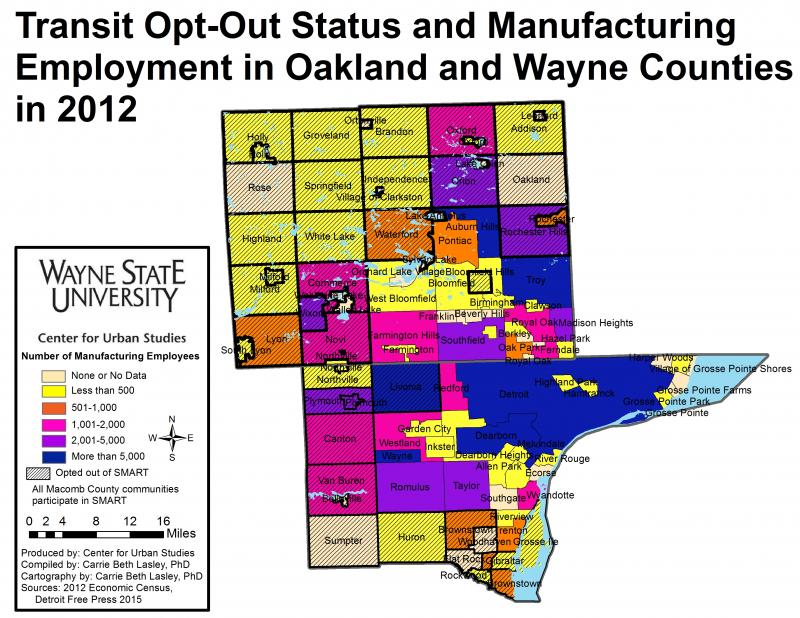A government entity’s budget is the document that spells out its priorities, both for the coming year and the future. The general fund is the primary fund used by a government entity and includes all general purpose in-and-out flows of revenues and expenditures that do not include special purpose, or enterprise, funds. At the county level in Southeastern Michigan the general fund budgets may be hundreds of million dollars, being larger for counties with larger population sizes. For example, in Wayne County the projected general fund budget for fiscal year 2021 is about $580 million while Macomb County’s proposed general fund budget for 2021 is $274.5 million, and Monroe County’s is about $46.8 million. Those general fund budgets, and the budgets of the other counties in the region, include personnel and operational costs for the counties. Typically, sheriff’s departments have among the highest departmental budgets in a county, with personnel and related costs making up majority of their expenditures. From road patrol to jail personnel to marine patrol to office support, the amount allocated out of a sheriff’s department budget covers various aspects. According to Statisa, major municipalities spend 20-45 percent of their general fund budgets on police related matters. The data in this post shows the general fund share of Sheriff’s Departments and is in line with that statistic. It further shows that policing and jail operations at the County level are high-level priorities, according to the percentage each sheriff’s department in Southeastern Michigan makes up of the corresponding general fund.

As shown in the map above 24-46 percent of each county’s general fund is allocated to the sheriff’s department (only Washtenaw and Oakland counties currently have adopted budgets for 2021, the others are proposed and/or projected). It should also be noted that much of those allocated funds do not include forfeiture or other special enterprise funds a sheriff’s department may have access to. Each department’s budget isn’t identical to its neighboring counties’, so while comparing each local sheriff’s department’s spending out of the General Fund is not apples-to-apple, it does provide a solid glimpse into each county’s priorities in spending. According to our research, the percentage of funds allocated to the sheriff’s department from the general fund in Washtenaw County is the highest at 46 percent; this is equivalent to about $57.1 million and includes the sheriff’s department, the corrections department and the emergency services department. Washtenaw County does not present its budget in a roll-down line item manner, which provides the greatest amount of detail, so exact reasons as to why it has the highest percentage of its general fund allocated to the sheriff’s department is not explicitly known. In the Washtenaw County budget though it did address how the department contracts with various municipalities for policing services; this brings in revenue but also in response causes expenditures as well. Contracted policing services are likely one of several reasons why the budget allocation percentage is 46 percent. Revenue from a public safety and mental health millage to support sheriff’s operations could also be related to the corresponding expenditures. Finally, the county also runs a central dispatch center. The Livingston County Sheriff’s Department is the only other one locally where more than 40 percent of the county’s general fund is allocated to the sheriff’s department. In Livingston County 42 percent of the general fund, or $51.4 million, is allocated.
Wayne County has the lowest percentage of general funds allocated to the sheriff’s department at 24 percent, or $141.3 million. For Wayne County, these allocated funds include those for the operation of the county jail (the building of the new jail is funded separately), non-jail services, sheriff court services and those related to the sheriff’s executive team. Macomb County has the second lowest percentage allocated at 33 percent, or $89.3 million. The funds allocated to the sheriff’s department in Macomb County include the patrol, jail and marine personnel, jail operations and other related items. In Oakland County 34 percent of the general fund ($165.9 million) is allocated to the sheriff’s department, and this includes corrective services, emergency communication services and emergency response and preparedness. Monroe County allocates 38 percent of its general fund budget to the sheriff’s department. Monroe County’s allocation includes road patrol, contracting with local municipalities and school units, marine safety and the jail; this totals $18 million.
The budget information available for St. Clair County was from previous years; current data was requested but not received.
While this post highlights budget spending priorities on policing and jail services in Southeastern Michigan, it also shows how budgeting from one local unit of government to another differs and can distort how much one department is actually receiving or expending. Reasons such as these are among many that explain why the public should pay close attention to how their local governments’ budgets and what the funds are allocated to. A budget document sets the priorities, and if the public speaks up, the priorities in your community can be shifted, as can the funds to support them.


